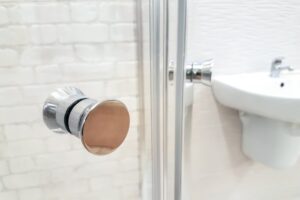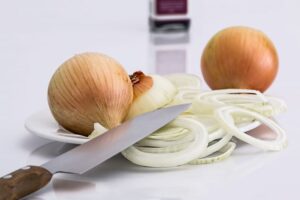Ever stay in a cosy cottage or boutique hotel room and notice the wooden floor has been painted? It can look fancy when done right, which is quite surprising, as it is incredibly cheap to do. When you compare the price per metre of paint with carpet or tiles, you’ll quickly wonder why every floor in your home isn’t painted from corner to corner.
Now, while it sounds too good to be true, if you don’t know what you’re doing or make the simplest of mistakes, painting a floor will go from a fun DIY project to something that will have you pulling hair out. So how do you make painting a floor easy?
Thanks to some tips from the paint experts at The Paint Shed, who knows a thing or two about selling floor paint, here is how you can cheat your way to getting floors painted without professional help.

Table of Contents
You need to do more than mop the floor
Floors, quite rightly, can take a bit of damage. They’re resilient to spills and stains in a way that makes furniture incredibly jealous. That doesn’t mean you give it a quick wipe and paint will take to it like it’s no one’s business.
Think of painting your floor like you would painting metal outside. You may need to scuff the floor and sand it down so your primer and the subsequent coats of paint, stick to the surface. For those on a really tight budget, you could buy sandpaper and get to buffing away by hand, but it will be time-intensive and be extremely taxing on your back. If you can afford it, rent a sander from your local DIY shop, or if your floor only needs a bit of buffing, ask around to see if anyone can lend you a floor buffer for a few hours.
It’s the difference between the floor is ready in minutes, and you wanting never to see a sheet of sandpaper for the rest of your life.
Nobody puts Baby in the corner
There aren’t many times in life you get to use Dirty Dancing to dish out advice on how to paint a surface, but this movie quote should be imprinted in the front of your brain before a drop of paint has touched the floor for the first time.
When prepping the floor, or beginning to paint, never start by the entry to the room, or you’ll literally end up painting yourself into a corner. Always paint from the far corner back towards the door, or else you’ll need to do a run and jump in the hope Patrick Swayze can catch you before your feet hit the floor.
The floor is always lava for everything
When painting a room, it isn’t just you that could cause problems. Every single thing which touches the floor is just waiting to stain or cause fresh coats to chip away. If you’re going to be painting somewhere like the bedroom or living room and have pieces of furniture you think you’ll need to move around, I’m sorry to say you can’t.
You’ll have to get them out of the room entirely. Why can’t you keep a bed frame upturned or sofa on its side? Unlike your walls, paint on floors typically takes longer to dry in. I’m talking a matter of days rather than hours. That means you’ll want to paint as much surface as possible in one go, rather than in sections. A staggered paint job on the floor can leave you to have visible differences in sections due to unconscious decisions like using a little more paint or even something as simple as brush strokes in a different direction.
Just think of the entire floor as lava, i.e. you don’t want anything touching it.
Do you want an airy or intense room?
My final pointer is regarding colour and finish. While your walls and ceiling can all be the same colour, if you used the same shade on your floor, it may accidentally warp the room. For example, if you have matt white on the walls, the same shade on the floor can suddenly “pull” everything in.
It’s best to opt for something just a shade or two away to compliment. Now, you can go the completely opposite direction and have a dark grey or slate in a white room, but don’t go for intense colours like red or black which can shrink a room down.
And don’t forget to get paint advertised as anti-slip; otherwise, you’re going to have a floor that socks will treat like a slip & slide.
Have fun painting!
I hope you found these tips for painting your floor helpful, and you’ll soon have some bright and colourful floorboards to show off.




